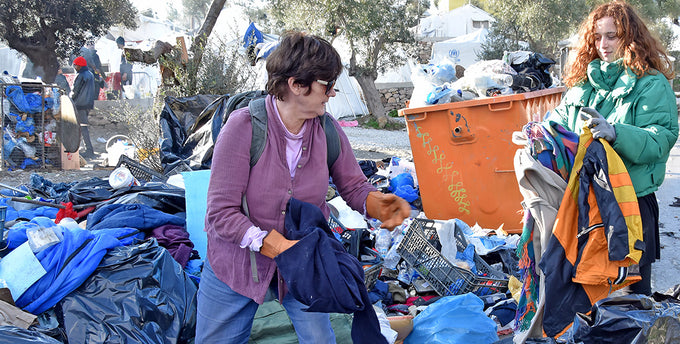Fleeing poverty, persecution and war – yet, for some refugees, their fate relies almost entirely on the safety a life jacket.
But just how did this ‘life-saving’ equipment become such a vital part of this story?
Figures reveal that, at the height of the refugee crisis between 2015-2016, hundreds of thousands of people escaped countries like Syria and headed to Greece in order to seek safety - but not all of them made it.
Even today, people continue to drown on the treacherous crossing from Turkey, and hundreds are thought to have been lost (or are recorded as missing) since records started in 2014 - their life jackets little use in the dangerous waters of the Aegean Sea.
And perhaps one of the issues is that these vests are barely sea-worthy in the first place.
Alison Terry-Evans, founder of Dirty Girls, an environmentally-focused group transforming the lives of refugees with one key message – to wash and re-use– explains more.
“For anyone not too familiar with the refugee life jackets, they look authentic,” she said.

“But, in reality, instead of polyvinyl chloride and polyethylene, which a real-life jacket contains, they are just filled with layers of thin polystyrene. This would keep a person afloat for a short time but couldn’t be classified as a ‘life-saving device’.
“Of course, it’s impossible to say how many would have had a better chance of survival if they had been wearing authentic jackets. One person drowning due to sinking, because the jacket they had bought in good faith was fake, is too many.
“But there would have been many.”
She explains that, when the number of migrants moving was at its highest, Turkey made several EU agreements which obligated the country to discourage refugees from crossing the sea into Greece, in exchange for financial deals.
“Shops went underground, so that now smugglers usually give a life jacket as part of their ‘fee’ – and refugees do report sometimes that they turn up to their boat and there are no life jackets at all,” she said.
Even for those with a life vest, though, there is no guarantee they will do the job – and, unfortunately, the practice of selling fake jackets has become a staple of this billion dollar industry, despite being condemned by authorities.
But their journey doesn’t end there.
For those refugees who do successfully make the perilous crossing, once their feet hit dry land, they are pulled out of their wet clothes and changed into dry ones - leaving their now useless (if they were ever useful before) life jackets on the sand.
And in 2015, with thousands of life jackets piled up in ‘mountains’ and left for waste, Alison quickly realised the Greek islands, including her home of Lesvos, were facing an ecological crisis.
Much of this was due to bigger charities on the front line opting to buy new, rather than wash and upcycle the materials left behind – which is how Alison’s brainchild was born.

By washing blankets and upcycling materials, rather than letting them go to landfill, Dirty Girls of Lesvos has saved the UN Refugee Agency (UNHCR) millions of euros over the last five years, because of the blankets they haven’t had to buy new.
And the materials from the life jackets, which are collected by volunteers from the beach, are now being recycled into products made by Dirty Girls (who use them to make messenger bags) and other social enterprises, like our very own Love Welcomes.
Using these discarded life jackets and damaged blankets, Love Welcomes has helped more than 42 refugee women get back into work, earning a fair income for themselves by creating products like welcome mats out of the old material.
Alison said: “It has meant thousands of damaged blankets [and life jackets] have not been sent to landfill.
“Dirty Girls had saved them hoping they could be up upcycled for a different functional use, and Love Welcomes came along to do that in an extremely effective way.”
To explore and find out more about the products helping refugee women stitch their lives back together, click here.
Find out more about the work of Dirty Girls here.
